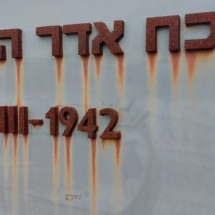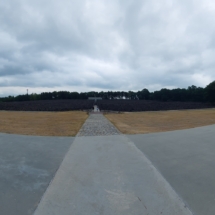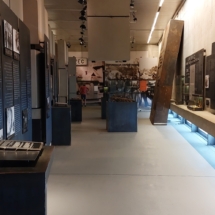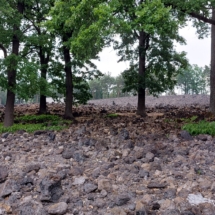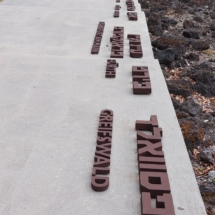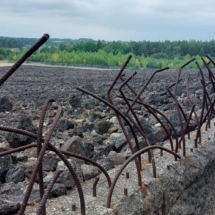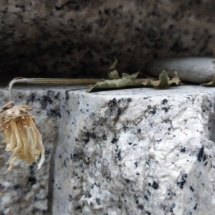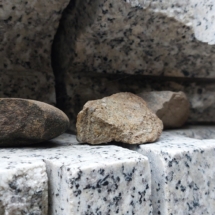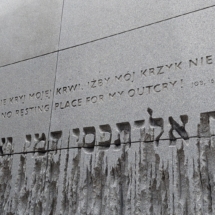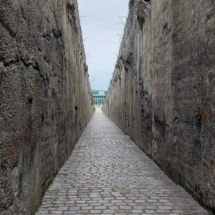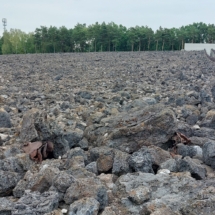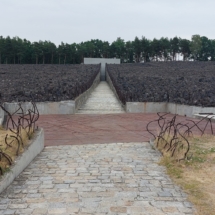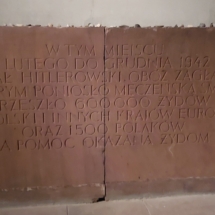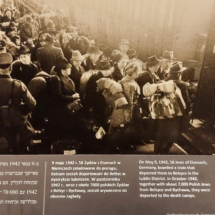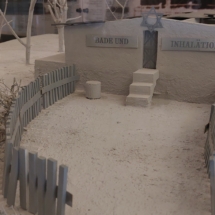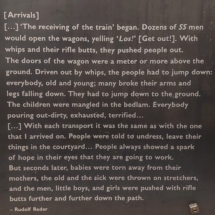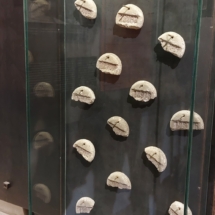There are many memorials throughout Europe, one of which is the Polish Belzec Memorial. We were given the opportunity to travel and visit this impressive complex with exhibition.
The former Belzec extermination camp in Bełżec (now Lublin Voivodeship) was a German extermination camp in which 434,508 people were murdered between March 1942 and December 1942, according to the SS there.
As part of “Aktion Reinhardt”, the camp was built next to Sobibór and Treblinka, the first of these three extermination camps.
During the occupation from 1939 to 1945, the municipality of Bełżec belonged to the german administered part of Poland called the General Government. In May 1940, a large number of sinti arrived here, who were deported from Czechoslovakia, Poland and Germany. From Bełżec they were distributed with about 10,000 Polish Jews to numerous branch camps, where from August 1940 they were mainly used for earthworks to build fortifications on the Soviet border between Bug and San.
On 1 November 1941, work began under the central construction management of the SS on the construction of the camp, which also included a brick gas chamber.
After completion of the gas chamber, 75,000 Jews were killed in four weeks, after which the transports were temporarily stopped in order to increase the capacity of the gas chamber by building new buildings; In the late summer of 1942, an excavator began excavating the earth.
Subsequently, from August 1942, Jews from the entire General Government were admitted. Initially, only a maximum of 15 freight wagons arrived, which could be “handled” at the same time, but after the new buildings there were 40 freight wagons.
On December 11, 1942, the last transport with victims arrived.
From November 1942, the masses of corpses began to be exhumed in order to burn them on large grates, built of railway tracks. The last prisoners deployed here were taken to Sobibór in a railway wagon and killed there.
Until 1956, the site of the former Belzec extermination camp was accessible without fencing and unattended. It was not until the end of 1963 that the first monument was erected here, the inscription read “In memory of the victims of Hitler’s terror”, which avoided any reference to the Jewish victims.
In 1995, the American Jewish Committee in Warsaw signed a contract to build a new memorial. Before the construction work began, archaeological investigations were carried out in advance in 1997, during which 33 mass graves could be located.
In 2004, a new memorial was opened according to designs by Polish sculptors Andrzej Sołyga, Zdzisław Pidek and Marcin Roszczyk , which documents the topography of the camp and the extermination machinery.
At the end of a symbolic ramp is a museum building that represents the shape of a train.
